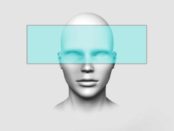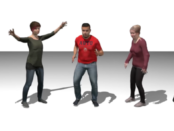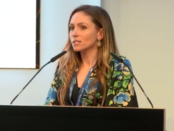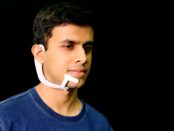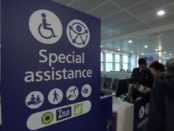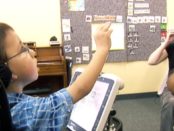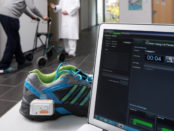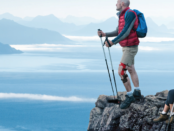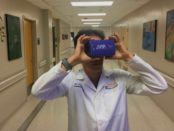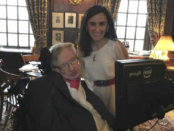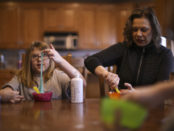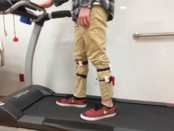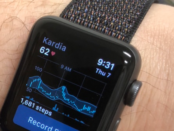Assistive technology
Self-care and improved mobility
Nuro’s new brain-computer interface uses neurological signals to let incapacitated patients talk to doctors and family. Nuro enables instant communication and computing for millions of people in post-surgeries and ICUs, nursing
… READ MORETransporting yourself into a video game, body and all, just got easier. Artificial intelligence has been used to create 3D models of people’s bodies for virtual reality avatars, surveillance, visualizing fashion, or movies. But it
… READ MOREDr. Breanne Everett makes smart shoes that can prevent injuries to diabetics’ feet. Dr. Breanne Everett shares her pitch for Orpyx at the Pitch@Palace boot camp at Facebook London on Friday. Pitch@Palace Facebook Sarah
… READ MOREMessage from Kevin Rempel, who fought to walk again, gives insights into the road ahead after traumatic injury. Canadian Paralympian Kevin Rempel placed his sledge hockey sticks on the balcony of his Toronto condominium in memory of
… READ MORELearn about eligibility requirements for Alberta Aids to Daily Living (AADL) and how to apply for and access benefits. Cost sharing of benefits The Alberta Aids to Daily Living (AADL) program helps Albertans with a long-term
… READ MORENational survey showed that people with disabilities are actively engaging in job preparation and job search activities, and successfully negotiating barriers at work. Disabled women’s equal pay struggles often go unheard — but
… READ MOREIf you are a disabled person wanting to get around by yourself on train or tube, good luck to you. Here’s what needs to be done. ‘Only about a quarter of London’s underground stations are fully accessible for disabled people.’
… READ MOREAn international study reveals that people, regardless of where they live and their age, poorly guess how physically active they actually are. USC researcher Arie Kapteyn led an international study on cultural differences in physical
… READ MORENadia Clarke, who has cerebral palsy and is profoundly deaf, employs a team of eight PAs to help her study, work, socialise and travel. Nadia Clarke and her godson Ned on a visit to a sea life centre. Melanie Tiplady, The Guardian
… READ MOREScientists have created a non-invasive, adhesive patch, which promises the measurement of glucose levels through the skin without a finger-prick blood test. The device can measure glucose levels without piercing the skin. University
… READ MOREInclusio opens doors to low-income Calgarians with limited mobility. After two years of construction, Calgary’s first fully automated assisted living apartment building is ready for residents to move in. The kitchenettes at
… READ MOREGoal is to gather information that is useful for visitors with mobility issues in one web location. Invermere residents Kate Gibbs and Cassy Campbell would like to make travel to the Columbia Valley easier for visitors with
… READ MOREQuebec-based company Prehos supplying digital system used in pilot project. Chief Michael Nolan demonstrates how paramedics will now be able to access patients’ medical information on an iPad. CBC CBC News Ottawa April 06, 2018
… READ MOREElectrodes on the face and jaw pick up otherwise undetectable neuromuscular signals triggered by internal verbalizations. Arnav Kapur, a researcher in the Fluid Interfaces group at the MIT Media Lab, demonstrates the AlterEgo project.
… READ MOREFlying disabled: Trouble in the skies. Wheelchair user Jemma Collins recalls how her dream holiday ended in bruises and humiliation when she was manhandled off a plane. Campaigner Christopher Wood, who has two disabled children, is
… READ MOREDeane Daprato when he was six-years-old and a day student at what was then called Bloorview MacMillan Kids Rehabilitation Hospital. CTV News Sandie Rinaldo, Anchor, National News Weekend & Reporter, CTV News W5 March 17, 2018 When
… READ MORE‘It feels like I am not a valued member of my community… I could disappear, and it’d be no big deal’ Glenda Hyatt bought a new scooter last week with money raised by her friends online. She gave up on the
… READ MORENew EIT Health research project launched on telemedical analysis of gait and falls. Analysing the gait of a Parkinson’s patient with inertial sensors. Kurt Fuchs Friedrich-Alexander-Universität Erlangen-Nürnberg March 14, 2018
… READ MOREWearable stomach monitor could help salvage a technology largely abandoned by gastroenterologists. Researchers have developed a wearable system to monitor stomach activity that performs as well as current state of the art methods but
… READ MOREWe generally like having our items and tools personalized, which is why 3D printing technology is so often used for mass customization. A Canadian startup called Caboma, founded in 2015, is on a mission to provide digital solutions
… READ MOREPhysicians, trainees and even lay people can now join an expert radiologist as he performs one of the most difficult medical procedures of its kind — thanks to virtual reality. Ziv Haskal, MD, watches the radiology procedure in
… READ MOREWhen Lama Nachman met Stephen Hawking in 2011, she was given one clear instruction: do not change his voice. Lama Nachman, right, worked with Stephen Hawking on upgrading the systems he used to communicate. The hardware for his voice
… READ MOREOne of Hawking’s greatest legacies is the work he did on technologies to assist people with disabilities. “It just seemed that cosmology was more exciting, because it really did seem to involve the big question: Where did the
… READ MOREA test to diagnose cerebral palsy at birth, which could allow infants access to critical early interventions, is one step closer thanks to research from the Murdoch Children’s Research Institute (MCRI) in Victoria, Australia.
… READ MOREFirst-of-its-kind study using electrical currents to boost motor skills shows promise. Testing the technology: Hadley Lucca, making slime with her mom, Sarah, took part in a groundbreaking study at the University of Minnesota that
… READ MOREInertial measurement units (IMUs) facilitate the creation of a gait analysis system that is portable and suited for use in the clinic. Research suggests IMUs can be used to measure clinically important gait metrics in children with
… READ MOREThe AliveCor KardiaBand, a sensor compatible with the Apple Watch, can detect dangerous levels of potassium in blood with 94 percent accuracy. Though the US Food and Drug Administration has not yet approved KardiaBand for this
… READ MOREStudents with disabilities are finding their place in medical schools—and beyond. For Jessica Dunkley, getting into medical school was no ordinary childhood dream. Deaf since the day she was born, Dunkley aspired to become a doctor
… READ MOREResearchers integrate magnetoelectronic sensors into electronic skin that tracks motion. When it comes to virtual reality systems, sensors that ‘fit like a glove’ aren’t good enough anymore. Now, we want such sensors to fit more
… READ MOREFlatScope may be the world’s tiniest, lightest microscope for biological applications and beyond. Lenses are no longer necessary for some microscopes, according to Rice University engineers developing FlatScope, a thin fluorescent
… READ MORE
